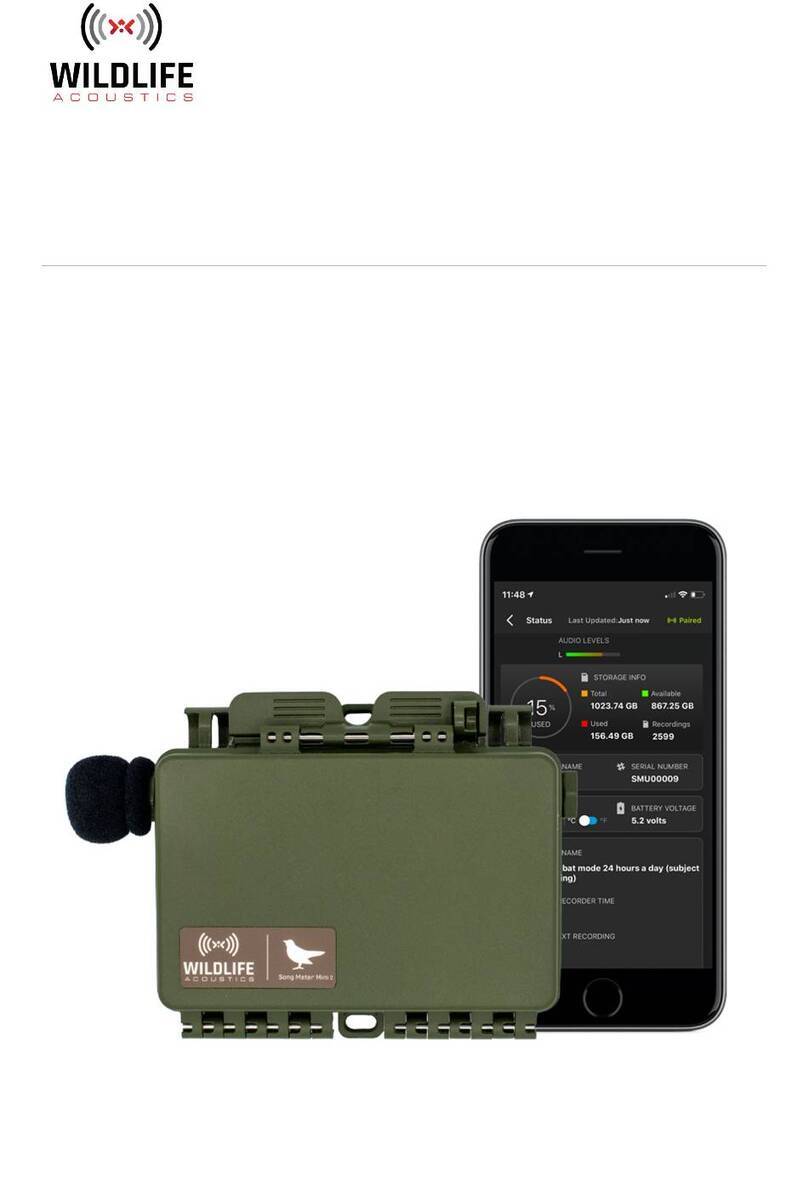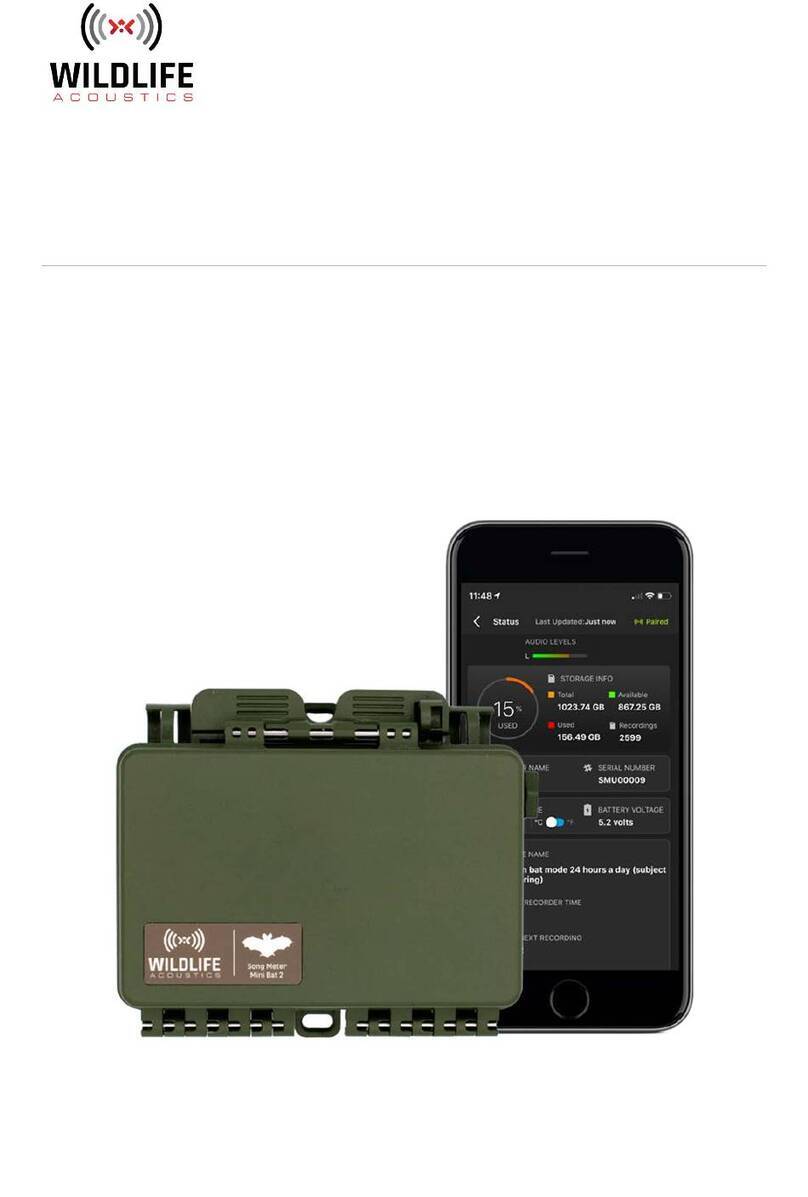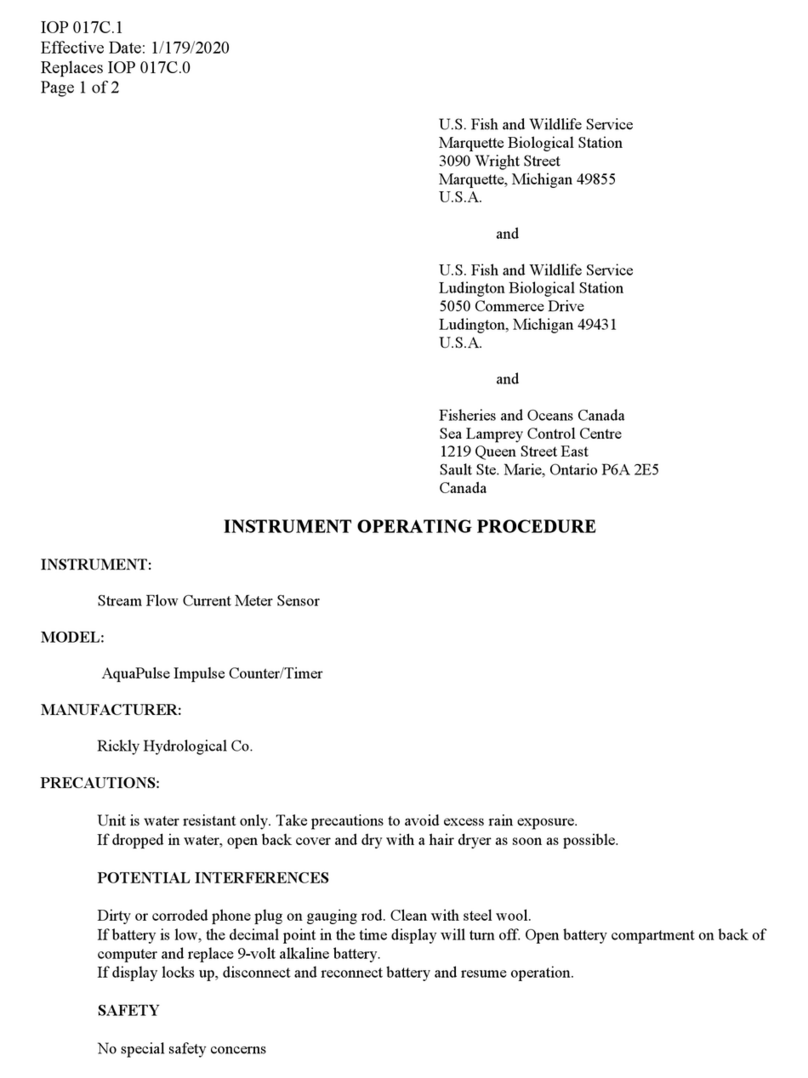
IOP 006A.1
Effective Date: 1/09/2017
Page 3 of 4
III. StatFace ™ electrode monitoring
A. The StatFace symbols in the upper left corner of the display indicate the state of the
electrode:
1. Electrode is calibrated and in good working order.
2. Electrode response is slow/deteriorating. Electrode should be
cleaned and recalibrated.
3. Electrode response is very slow and correct measurement is no
longer ensured. Clean or replace electrode
IV. Data logging mode
A. Press the STO key and then the clock key to access data log mode options. Press the up
or down arrow key to move between options. Pressing STO also advances to the next
menu item. Pressing the meas key at any time ends data logging mode.
B. To set parameters scroll to PAr: Press STO and Int (time interval between logged
data points) is displayed
1. In INT, press STO to access interval range, which should be set at 60:00 (60
minutes); if not, adjust interval using up or down arrows. Press STO again and
display returns to Cont.
C. Scroll to Strt (start): Pressing STO clears the logger memory and begins data logging.
The first logged data point is in memory location “00”.
D. The Orion model 265A and 266S records up to 100 data points (memory locations “00”
to “99”). The data log does not automatically stop after reaching 100 data points. It
continues logging beginning at location “00” and overwrites previously recorded data.
V. Deployment
A. Place the unit in an inconspicuous location on the stream bank so the probe can be placed
in moving water several feet from the bank.
B. Suspend the probe in the water column (e.g. drape from a tree branch, place on a forked
stick stuck into the stream bed or on a stack of rocks). This minimizes interference from
silt or biological accumulation on the electrode.
C. Enter data logging mode (press STO then clock), move to Strt, then press STO to
begin logging. Record the time logging started, logger pH and water temperature on the
pH Logger Calibration and Deployment Record form.
VI. Retrieval
B. Press meas to end data logging and turn the unit off.
C. Downloading pH logger data with Paraly SW109 data transfer software
1. Connect the logger to a computer with the serial interface cable. The 3-prong
end is connected to the logger with the “PC” labeled side facing the front of the



























